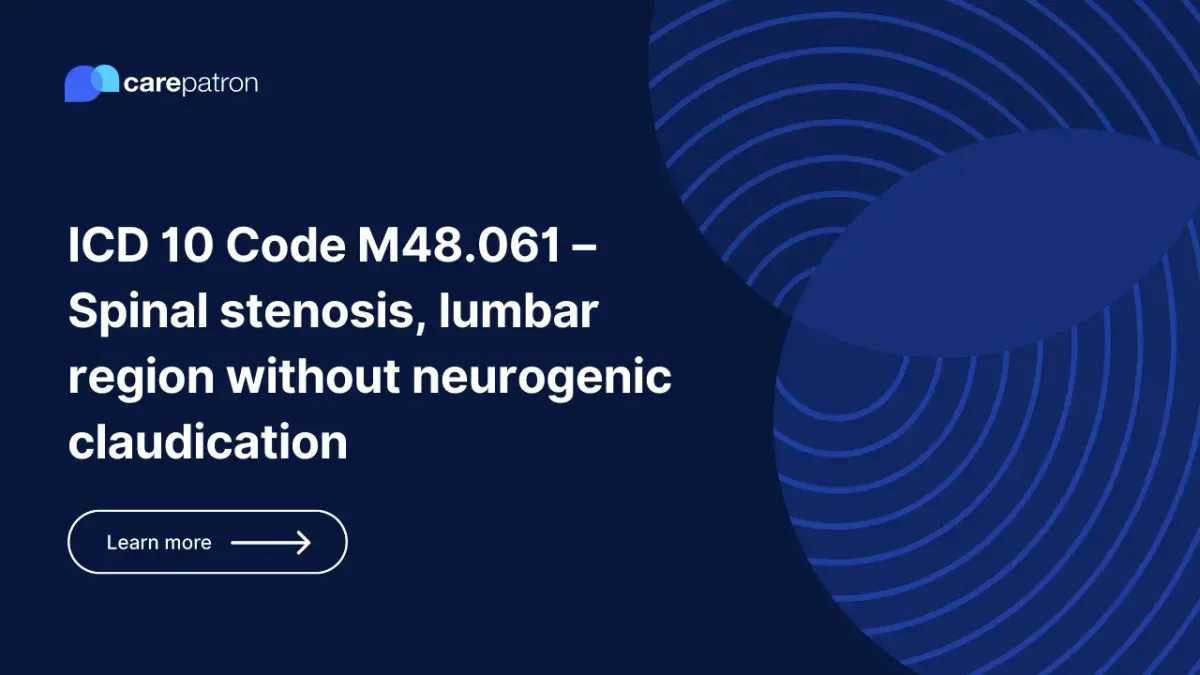
M48.061 – Spinal stenosis, lumbar region without neurogenic claudication | ICD-10-CM
Gain a deeper understanding of the diagnosis, billability, and clinical aspects of M48.061 – Spinal stenosis of the lumbar region without neurogenic claudication.
Use Code
Commonly asked questions
You use M48.061 when you must diagnose the patient with spinal stenosis in the lumbar region, and they’re not exhibiting any symptoms of neurogenic claudication.
Yes, M48.061 is a billable diagnosis code that can be used for reimbursements.
Among the common treatments for the M48.061 diagnosis code are physical therapy, medicine, and surgery.
EHR and practice management software
Get started for free
*No credit card required
Free
$0/usd
Unlimited clients
Telehealth
1GB of storage
Client portal text
Automated billing and online payments
